Have you ever wondered what makes natural diamonds so precious and captivating? In this article, we’ll embark on a journey to explore the world of natural diamonds, their formation, their characteristics, and why they continue to hold a special place in our hearts. So, let’s dive right in!
Table of Contents
ToggleWhat Exactly Are Natural Diamonds?
To truly appreciate the significance of natural diamonds, we must first understand what they are. At their core, natural diamonds are precious gemstones formed deep within the Earth’s mantle over billions of years. They are composed of carbon atoms arranged in a crystal lattice structure, which gives them their remarkable strength and dazzling brilliance.
How are diamonds formed?
Natural diamonds begin their journey about 100 miles below the Earth’s surface, where temperatures can reach a scorching 2,200 degrees Fahrenheit. Under these conditions, carbon atoms form into the beautiful crystals we know as diamonds.
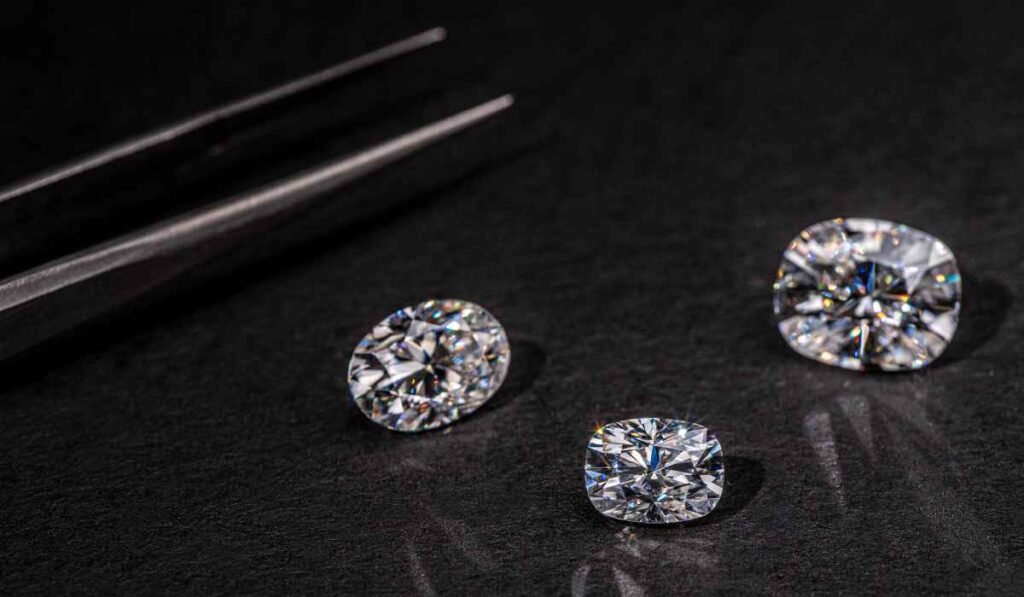
natural diamonds meaning
Natural diamonds are often associated with love and commitment. They symbolize enduring relationships, making them a popular choice for engagement rings. Their timeless beauty evokes emotions that words alone cannot express.
Natural vs. Synthetic Diamonds: Key Differences
While natural diamonds are formed over millennia, synthetic diamonds are created in a laboratory. Natural diamonds carry the allure of nature’s artistry, whereas synthetic diamonds offer an ethical and affordable alternative. Both have their unique appeal, but the choice depends on your preference and budget.
Natural Diamonds in Jewelry
Natural diamonds play a significant and enduring role in the world of jewelry, and their involvement is deeply rooted in history, tradition, and symbolism. Here’s a closer look at how natural diamonds are involved in jewelry:
Engagement Rings
Perhaps the most iconic and symbolic use of natural diamonds in jewelry is in engagement rings. For generations, natural diamonds have been the gemstone of choice to symbolize love, commitment, and the promise of a lifelong partnership. The sparkle and durability of diamonds make them a fitting symbol for the enduring nature of marriage.
Wedding Bands
Natural diamonds are often incorporated into wedding bands, both for men and women, to enhance their beauty and significance. These diamonds can be set in various styles, from classic solitaire diamonds to intricate designs.
Necklaces
Natural diamonds are frequently used in necklaces and pendants, creating eye-catching focal points that draw attention to the wearer’s neckline. They can be worn as elegant single stones or combined into stunning diamond necklaces for special occasions.
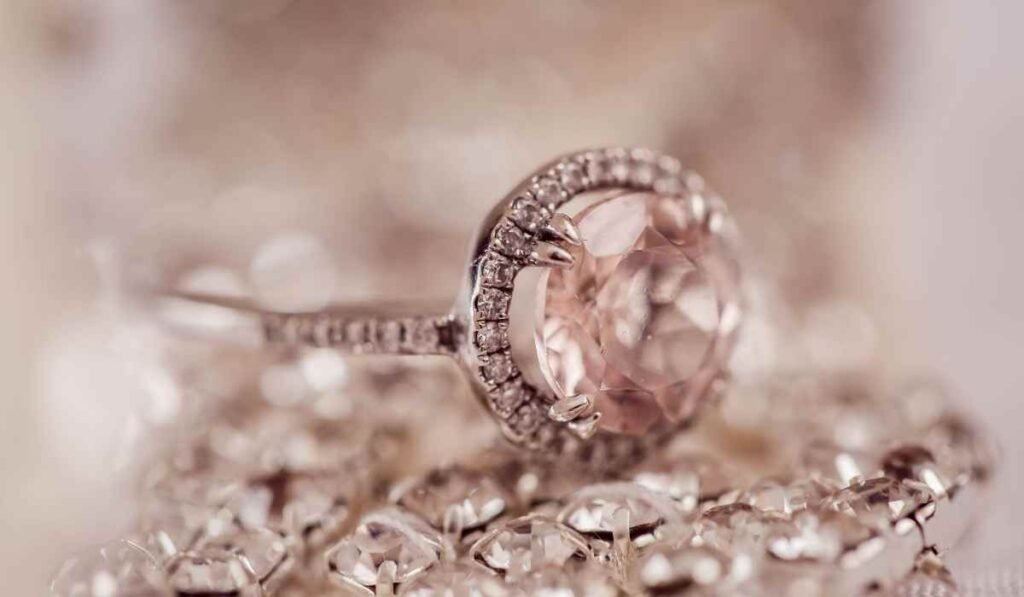
Anniversary Jewelry
Natural diamonds are often given as gifts to celebrate significant anniversaries. Whether as diamond anniversary rings or other diamond-accented jewelry, they symbolize enduring love and commitment.
Earrings
Diamond earrings, whether as elegant studs or dazzling chandelier-style drops, are a timeless choice for adding a touch of sophistication and glamour to any outfit. Natural diamonds’ brilliance and versatility make them ideal for earrings.
Bracelets
Diamond bracelets are a luxurious accessory, featuring an array of natural diamonds set in various designs, from tennis bracelets with a continuous line of diamonds to more intricate, artful pieces.
Special Occasion Jewelry
Diamonds are a favorite choice for special occasions like birthdays, graduations, and milestone celebrations. Their timeless appeal and ability to capture the light make them a cherished gift.
Custom and Bespoke Designs
Many people opt for custom jewelry designs that incorporate natural diamonds. This allows for a personalized touch, where the wearer can select the diamond’s size, shape, quality, and setting style.
Fashion and Red Carpet Jewelry
Natural diamonds are often featured in high-end fashion and red carpet jewelry. Celebrities and fashion enthusiasts alike appreciate their unparalleled sparkle and elegance.
Heirloom Pieces
Natural diamonds have a reputation for lasting generations. They are often passed down as heirloom pieces, carrying not only financial value but also sentimental significance within families.
Natural diamonds continue to captivate people with their beauty, durability, and timeless allure. Their involvement in jewelry extends beyond aesthetics, carrying profound symbolic and emotional weight in various cultures and societies, making them an enduring choice for commemorating life’s most meaningful moments.
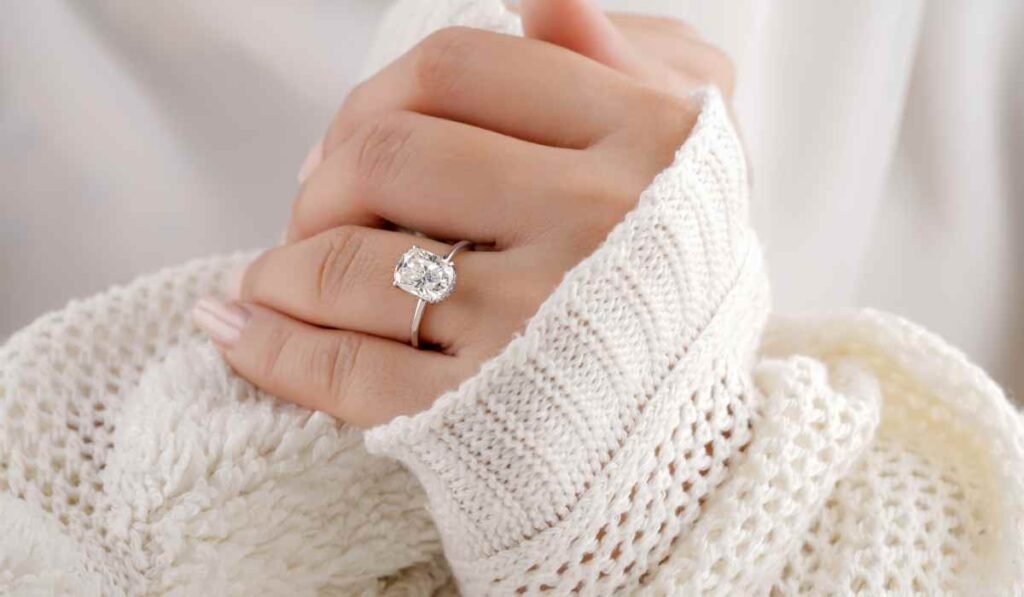
Pros of Natural Diamonds:
- Unmatched Beauty: Natural diamonds are known for their unparalleled beauty, characterized by exceptional brilliance, fire, and sparkle. Their aesthetic appeal has made them the most sought-after gemstones for centuries.
- Symbolism: Natural diamonds are powerful symbols of love, commitment, and luxury. They are often used in engagement rings and other jewelry to represent enduring relationships and success.
- Durability: Diamonds are the hardest substance on Earth, making them highly resistant to scratches and damage. They are well-suited for everyday wear and can last for generations.
- Rarity: Natural diamonds are formed deep within the Earth’s mantle over millions of years, making them a finite and rare resource. This scarcity contributes to their value.
- Long-Term Investment: High-quality natural diamonds can appreciate in value over time, making them a potentially lucrative long-term investment.
- Cultural Significance: Diamonds have cultural and historical significance in many societies, often associated with royalty, wealth, and prestige.
Cons of Natural Diamonds:
- Environmental Impact: The mining of natural diamonds can have significant environmental consequences, including habitat disruption, water pollution, and carbon emissions. Some diamond mines have been associated with ecological damage.
- Ethical Concerns: The diamond industry has faced ethical challenges related to conflict diamonds (blood diamonds) that have funded civil wars and human rights abuses in certain regions. However, measures have been taken to address this issue through the Kimberley Process Certification Scheme.
- High Cost: Natural diamonds are generally more expensive than lab-grown diamonds of similar quality due to their rarity and the cost of mining and extraction.
- Inequality in Diamond Trade: Some argue that the diamond trade has contributed to economic inequality in diamond-producing regions, with profits often benefiting large corporations rather than local communities.
- Lack of Customization: Natural diamonds come in various shapes, sizes, and qualities, but they cannot be customized to the same extent as lab-grown diamonds, which can be created with specific characteristics.
- Risk of Buying Inauthentic Diamonds: Consumers may encounter the risk of purchasing inauthentic or treated diamonds when not dealing with reputable sources. Verification and certification are essential when buying natural diamonds.
Types of Natural Diamonds
Natural diamonds come in various types, which are classified based on their color, clarity, size, and other characteristics. Here are some of the common types of natural diamonds:
- Colorless Diamonds: These diamonds are prized for their lack of color, allowing them to exhibit maximum brilliance and sparkle. The Gemological Institute of America (GIA) grades colorless diamonds on a scale from D (colorless) to Z (light yellow or brown).
- Fancy Color Diamonds: Unlike colorless diamonds, fancy color diamonds display vibrant and distinct colors, including yellow, blue, pink, green, and red. The intensity and hue of the color determine their value. Some famous fancy-color diamonds include the Hope Diamond (blue) and the Pink Star Diamond (pink).
- Flawless Diamonds: Flawless diamonds are exceptionally rare and have no internal or external flaws or inclusions when examined under 10x magnification. They are highly valued for their purity and clarity.
- Internally Flawless Diamonds: Internally flawless diamonds have no internal flaws but may have minor surface blemishes. They are also highly sought-after for their exceptional clarity.
- VVS (Very Very Slightly Included) Diamonds: VVS diamonds have only tiny inclusions that are extremely difficult to detect even under magnification. They are considered to be of very high quality.
- VS (Very Slightly Included) Diamonds: VS diamonds have small inclusions that are visible under 10x magnification but are often not noticeable to the naked eye. They offer excellent value for those seeking a balance between quality and price.
- SI (Slightly Included) Diamonds: SI diamonds have noticeable inclusions when viewed under 10x magnification, but they are still generally eye-clean, meaning that the inclusions are not visible without magnification.
- I (Included) Diamonds: I diamonds have inclusions that are visible to the naked eye. While they may be less expensive, they may not have the same level of clarity and brilliance as higher-quality diamonds.
- Round Brilliant Cut Diamonds: Round brilliant cut diamonds are the most popular and classic diamond shape, known for their maximum sparkle and fire. They have 57 or 58 facets that optimize light reflection.
- Fancy Shape Diamonds: Fancy shape diamonds include a variety of non-round shapes such as princess, emerald, oval, pear, marquise, and heart. These shapes offer unique and distinctive appearances.
- Large Carat Diamonds: Diamonds that weigh several carats (e.g., 2 carats, 3 carats, or more) are considered large carat diamonds. They are often chosen for their impressive size and presence.
- Small Diamonds: Small diamonds, typically less than 0.10 carats, are often used as accents in jewelry, such as pavé settings and side stones.
- Rough Diamonds: Before being cut and polished, diamonds are rough gemstones in their natural state. These uncut diamonds are found in various shapes and sizes, and the cutting process determines their final appearance.

Is natural diamond a real diamond?
Yes, a natural diamond is indeed a real diamond. Natural diamonds are diamonds that have formed deep within the earth under high pressure and temperature conditions over millions of years.
These diamonds are composed of carbon atoms arranged in a crystal lattice structure, making them genuine and authentic gemstones. Natural diamonds are highly valued for their beauty, durability, and rarity, and they are used in various forms of jewelry and as symbols of love and commitment.
difference between natural diamond and real diamond?
There is no difference between a natural diamond and a real diamond. The terms “natural diamond” and “real diamond” are often used interchangeably in the jewelry industry and among gemologists.
Both refer to diamonds that have formed naturally in the Earth’s mantle, composed of carbon atoms arranged in a crystal lattice structure. These diamonds are genuine and authentic gemstones, highly valued for their beauty, durability, and rarity.
It’s important to note that there are also synthetic or lab-grown diamonds, which are created in a laboratory environment but share the same chemical and physical properties as natural diamonds. While synthetic diamonds are real diamonds, they are distinct from natural diamonds in terms of their origin.
Natural diamonds are formed through geological processes deep within the Earth, whereas synthetic diamonds are created through technological processes in a controlled laboratory setting.
Are natural diamonds more expensive?
Natural diamonds tend to be more expensive than synthetic (lab-grown) diamonds of similar quality and size. Several factors contribute to the higher cost of natural diamonds:
Rarity
Natural diamonds are rare geological formations that require specific conditions, including immense pressure and heat, to develop over millions of years. The limited supply of these diamonds naturally makes them more valuable.
Mining and Processing
Extracting natural diamonds from the Earth’s crust involves significant costs, including exploration, mining, transportation, and processing. This adds to the overall expense of natural diamonds.
Unique Characteristics
Natural diamonds often have unique inclusions and characteristics that make them one-of-a-kind. These individual qualities can significantly increase their value.

Market Demand
Natural diamonds have a long history of desirability, symbolizing love, commitment, and luxury. This enduring demand in the market contributes to their higher prices.
However, it’s essential to note that the price difference between natural and synthetic diamonds has been decreasing in recent years due to advancements in diamond-growing technology and the increased availability of lab-grown diamonds.
While natural diamonds remain more expensive, the price gap is narrowing, making synthetic diamonds an attractive and ethical alternative for many consumers who prioritize sustainability and cost-effectiveness.
Here’s a pricing table comparing natural diamonds with other types of diamonds, including synthetic (lab-grown) and treated diamonds.
| Type of Diamond | Price Range (per carat) | Comments |
|---|---|---|
| Natural Diamonds | $1,000 – $20,000+ | The price varies based on quality and size. Natural diamonds are the most expensive due to their rarity and unique characteristics. |
| Synthetic Diamonds | $200 – $5,000+ | Synthetic diamonds are generally more affordable than natural diamonds of similar quality. Prices can vary based on production method and quality. |
| Treated Diamonds | $500 – $10,000+ | Treated diamonds may include diamonds that have undergone enhancements to improve their color or clarity. Prices depend on the extent of treatment. |
How much value do natural diamonds hold?
Yes, natural diamonds typically hold their value well over time. Several factors contribute to the enduring value of natural diamonds:
Scarcity: Natural diamonds are formed deep within the Earth’s mantle over millions of years under specific conditions. Their rarity makes them a finite resource, and as a result, they have maintained their intrinsic value over centuries.
Timelessness: Diamonds have been cherished for their beauty and symbolism for generations. They have a timeless appeal that transcends trends and fashion, contributing to their lasting value.
Symbolism: Natural diamonds are often associated with love, commitment, and luxury, making them highly sought-after for engagement rings and other meaningful jewelry. Their symbolic significance adds to their enduring appeal.
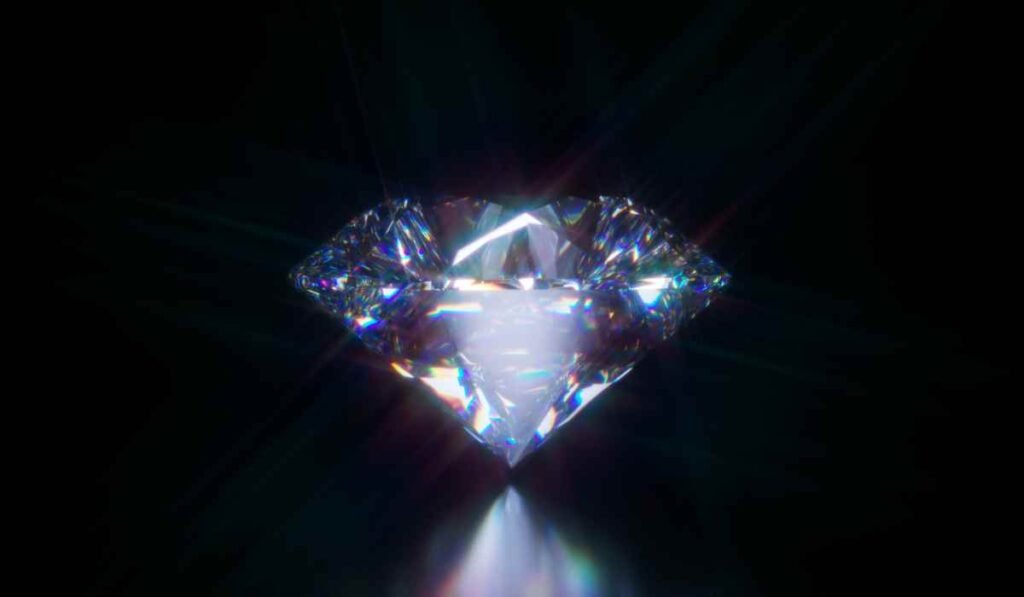
Durability: Diamonds are the hardest substance on Earth, ranking 10 on the Mohs scale of mineral hardness. This exceptional durability ensures that diamonds can withstand the test of time without significant wear or damage.
Market Demand: There is a consistent demand for natural diamonds in the global market, particularly for high-quality stones. This demand helps maintain their value.
Collector’s Items: Rare and exceptional natural diamonds, such as those with unique colors or large carat weights, can appreciate in value over time and become valuable collector’s items.
It’s important to note that the value of a natural diamond can also be influenced by factors such as its size, color, clarity, and cut quality.
Here is a general idea of how natural diamond values might change based on carat size over the years. Please note that these are approximate values, and actual prices may vary.
| Year | Carat Size (Average) | Approximate Value Range (per carat) |
|---|---|---|
| New Purchase | 1 carat | $4,000 – $20,000+ |
| After 5 years | 1 carat | $4,000 – $22,000+ |
| After 10 years | 1 carat | $4,000 – $24,000+ |
| After 20 years | 1 carat | $4,000 – $26,000+ |
Are lab-grown diamonds the same as natural diamonds?
Lab-grown diamonds are not exactly the same as natural diamonds, although they share many similarities. Here are the key differences between lab-grown diamonds and natural diamonds:
- Origin:
- Natural Diamonds: Natural diamonds are formed deep within the Earth’s mantle over millions of years under high pressure and temperature conditions. They are created by natural geological processes.
- Lab-Grown Diamonds: Lab-grown diamonds, also known as synthetic or man-made diamonds, are created in a controlled laboratory environment. They are produced through various methods, including High Pressure High Temperature (HPHT) and Chemical Vapor Deposition (CVD).
- Composition:
- Natural Diamonds: Natural diamonds are composed of carbon atoms arranged in a crystal lattice structure. They contain trace elements and inclusions that are unique to their geological origin.
- Lab-Grown Diamonds: Lab-grown diamonds have the same crystal structure and chemical composition as natural diamonds. They are also made of carbon atoms in a crystal lattice. However, they may lack the unique inclusions found in natural diamonds.
- Quality and Characteristics:
- Natural Diamonds: Natural diamonds can vary widely in terms of color, clarity, and other quality factors. They often have unique inclusions, which are seen as birthmarks and add to their individuality.
- Lab-Grown Diamonds: Lab-grown diamonds can be produced with specific qualities and characteristics, and they are often of high quality. They may have fewer inclusions and can be created in a variety of colors.
- Cost:
- Natural Diamonds: Natural diamonds are typically more expensive than lab-grown diamonds of similar quality and size due to their rarity and the cost associated with mining and extraction.
- Lab-Grown Diamonds: Lab-grown diamonds are generally more affordable than natural diamonds, making them an attractive option for those seeking value and ethical considerations.
- Sustainability and Ethical Concerns:
- Natural Diamonds: The mining of natural diamonds has raised ethical and environmental concerns, including issues related to conflict diamonds and ecological impact.
- Lab-Grown Diamonds: Lab-grown diamonds are often considered a more ethical and sustainable choice, as they do not involve environmentally damaging mining practices and are less likely to be associated with conflict.
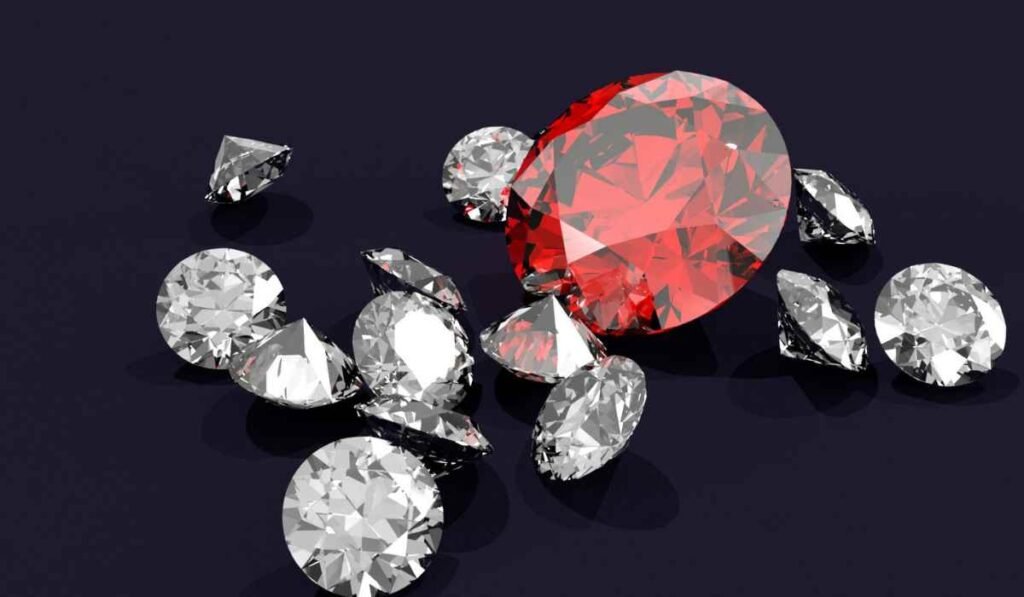
Do natural diamonds fade?
No, natural diamonds do not fade. Natural diamonds are incredibly durable and stable gemstones. They are composed of carbon atoms arranged in a crystal lattice structure, which gives them their exceptional hardness and stability. This unique structure ensures that natural diamonds do not fade or lose their color over time.
In fact, one of the reasons diamonds are highly prized is their ability to retain their brilliance, fire, and sparkle indefinitely. Unlike some other gemstones, which may fade or change color due to exposure to light or environmental factors, natural diamonds are resistant to such changes.
Do natural diamonds sparkle more?
Natural diamonds tend to sparkle more than synthetic (lab-grown) diamonds of similar quality when they have been cut and polished to ideal proportions. This enhanced sparkle is primarily due to the following factors:
Crystal Structure: Both natural and synthetic diamonds have the same crystal structure composed of carbon atoms arranged in a lattice pattern. This structure allows light to enter the diamond and undergo internal reflection, creating sparkle and brilliance.
Quality of Cut: The way a diamond is cut, including its proportions, angles, and facet placement, significantly impacts its ability to reflect and refract light effectively. Natural diamonds are typically cut with great precision to maximize their sparkle.
Inclusions: Some synthetic diamonds may have inclusions or impurities that can affect their sparkle. Natural diamonds, on the other hand, often have unique inclusions that can add to their individuality without diminishing their overall sparkle.
Fire and Scintillation: Natural diamonds are known for their exceptional “fire” and “scintillation,” which refer to the play of colors and flashes of light that occur as the diamond moves. These characteristics contribute to their overall sparkle.
Size and Quality: The carat weight and overall quality of a diamond, including factors like color and clarity, also influence how much it sparkles. Larger, higher-quality natural diamonds tend to exhibit more sparkle.
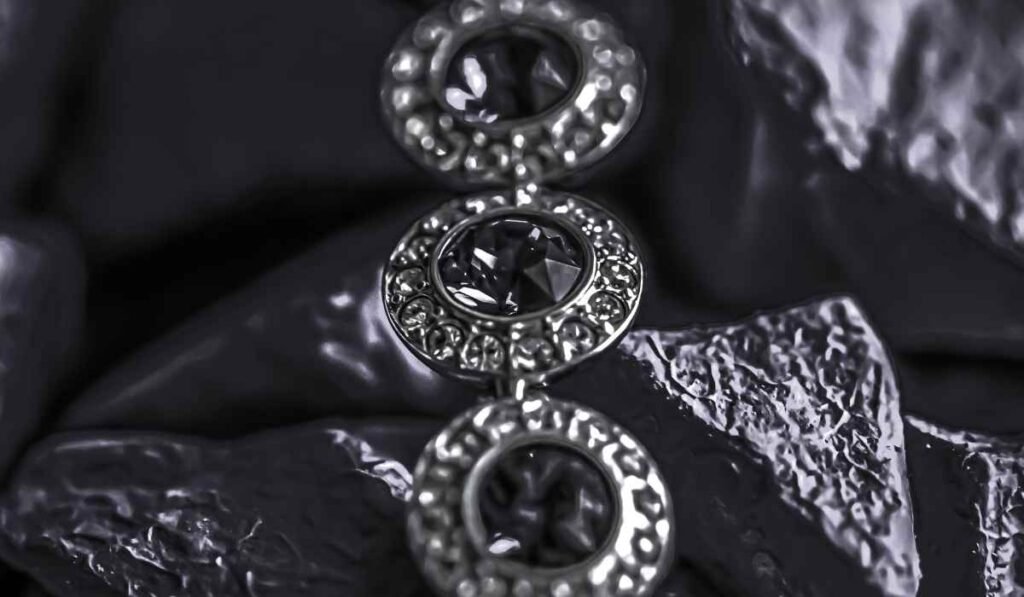
Conclusion
Natural diamonds are not just geological marvels; they are symbols of love, commitment, and timeless beauty. Their journey from the depths of the earth to adorning our lives is a testament to the wonders of nature. So, whether you’re looking for the perfect engagement ring or a meaningful investment, natural diamonds continue to shine as exquisite treasures from the heart of the earth.
